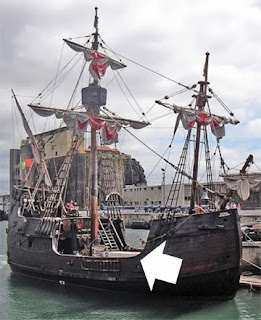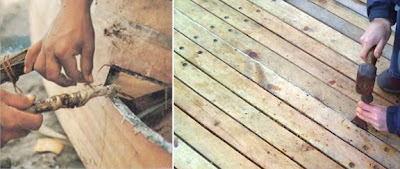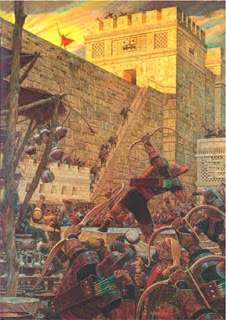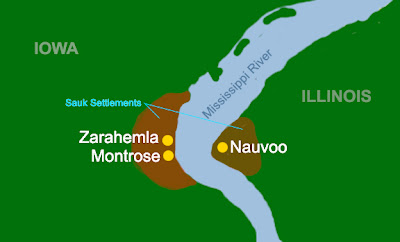From about 875 B.C., Assyria’s rise to power resulted in the invasion of Phoenicia , which deprived them of their independence. The major seaport cities of Byblos, Tyre and Sidon rebelled several times and the Assyrians brought total destruction to these cities in response. In 700 B.C., Phoenicians joined the Arameneans (Syria) in anti-Assyrian League, resulting in the total devastation of Sidon in 675 B.C. Thirty-five years later the Assyrians massacred Phoenicians of Tyre. During all this time, the Phoenicians were under the thumb of Assyria, but in 610 B.C., Babylonia crushed Assyria and later occupied all of Phoenicia. When Tyre rebelled again, it was destroyed by the Babylonians after a fourteen year siege. Not until 450 B.C., did the Carthaginians break out of the Mediterranean and sail to England to trade, especially for tin.
Phoenicia is credited with sailing around Africa at the end of the 7th Century B.C., however, this was not a case of a Phoenician city state embarking on a voyage of discovery, but of the Egyptian king Necho commissioning Phoenician sailors to sail around the continent of Africa. It is doubtful that the Phoenician city-states of Tyre, Sidon, or Byblos could have managed any voyage of discovery while under the thumb of Assyria and Babylonia. Then, too, Phoenicians were always merchants and traders, not explorers, and their voyages throughout history were involved in settling and trading with coastal cities of the Mediterranean.
It is also extremely doubtful Phoenicians would have been sailing to any Israel port for those in Jerusalem to know of their ships and designs. By 600 B.C., Phoenicia’s power base and sailing achievements were over 1800 miles to the west of Jerusalem among the Carthiginians, who were not known to travel to the east coast, other than to Tyre and Sidon, but to the west. In fact, by 600 B.C., the Phoenicians were in a power struggle with Gaul (France) for the tin trade, which was controlled overland by the Gallians. For over a hundred years this struggle for control ensued, until in the fifth century B.C. the Carthaginian Himilco, sailed from this seat of the Phoenician empire in Carthage through the Straits of Gibraltar around the western coasts of Spain and France and continued until he reached the islands around the southern coast of England and the area known to the Phoenicians as "Tin-Land."
As for Jerusalem, throughout their history except for that brief naval period under Solomon, their trade was with the Arab caravans that traveled along the King’s Highway to the east of Jerusalem on their way north to Assyria. Even with Solomon’s shipping, they never sailed the Mediterranean, but the Red Sea to the Arabian Sea and along the Arabian coast.
As for the Phoenician ship capability, even Meldrum admits their ships had a broad rounded hull design that did not allow for the ship, under sail, to 'tack' against the current winds. According to him, not until around 1100 A.D. did shipbuilding utilize a deep keel to help keep the ship tracking the desired direction even in near contrary winds. This was a major design feature of later ships. Obviously, a “broad, rounded hull design” would not be capable of sailing in deep water across the oceans of the world. Deep keels are required to handle such sailing, as are strongly constructed hulls—which are not needed for coastal sailing.
Finally, Meldrum concludes by saying, “While we don't know exactly what methods were used to build the ship, the end result was a wooden sailing ship. So my speculation is that the primary way in which the ship differed from other ships of their day might have been 1. how they put the beams and planks together and 2. the hull design, possibly with a deep hull instead of the current rounded hull. That's my best guess.”
 600 B.C. era Phoenician Ships. According to Greek writers, Upper Left: Early war galley; Upper Right: Later war ship; Lower Left: Transport ship; Lower Right: Merchant ship
600 B.C. era Phoenician Ships. According to Greek writers, Upper Left: Early war galley; Upper Right: Later war ship; Lower Left: Transport ship; Lower Right: Merchant shipWhat seems to be forgotten is that Phoenician ship designs were basically oar-driven vessels around 600 B.C., with either one or two layers of oars, which provided the basic motive power of their ships. It is claimed by Austen Henry, in “Monuments of Nineveh” and “Nineveh and its Remains,” that by 700 B.C. “some great advances seem to have been made by the Phoenician shipbuilders. In the first place, they introduced the practice of placing the rowers on two different levels, one above the other, thus for a vessel of the same length, they could double the number of rowers.” Xenophon of Athens about 300 years after Lehi set sail, described a Phoenician merchant ship as sailing by means of a quantity of rigging, which implies 'several' sails.’
However, during Lehi’s time, according to Herodotus, considered the “Father of History,” Corinth (Greek) Biremes were adopted by the Phoenicians before the end of the 6th century B.C., with three decks of rowers. And according to the Greek writers, Phoenician vessels were mainly of two kinds, merchant ships and war-vessels. The merchant ships were of a broad, round make, what today’s sailors would call "tubs," and the war-vessels were impelled by rowers sitting one row above the other, neither of which could have crossed deep oceans.
While oar-driven ships were sturdy and could maneuver around the Mediterranean, and did so for more than a thousand years after Phoenicians disappeared, by the Greeks and Romans who followed, such ships were hardly capable of deep ocean sailing.
Once again, Meldrum’s casual approach to the scriptural account of Nephi and his ship building lies in error. Nephi would have had no idea how the Phoenicians built their ships.



























